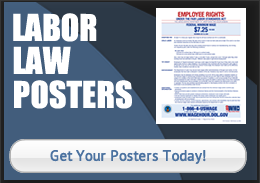Complete Story
02/22/2019
THE YEAR AHEAD: Economy, Employment To Remain Positive In 2019
Source: Tire Business
Positive economic growth and low unemployment in the U.S., along with increased consumer and corporate spending, are expected to continue through 2019, according to economic analysts and surveys.
Economic growth is expected to continue into the new year, with an average 3-percent U.S. output and strong gains in domestic job growth, according to Indiana University's (IU) Kelley School of Business.
However, Goldman Sachs & Co. L.L.C. predicts growth will slow significantly in 2019, to roughly 1.75 percent by year-end, from a recent pace of 3.5 percent.
"We expect tighter financial conditions and a fading fiscal stimulus to be the key drivers of the deceleration," Goldman Sachs said.
"Robust job creation should push the unemployment rate to 3 percent by early 2020, well below our 4.5-percent estimate of full employment, the rate consistent with 2-percent inflation. Wage growth should reach 3.25 to 3.5 percent in this environment."
The Congressional Budget Office (CBO) predicted in August that real U.S. gross domestic product (GDP) in 2018 would grow 3.1 percent due to increases in government spending, reduction in taxes and faster growth in private investment. However for 2019, the CBO predicts GDP growth to slow to 2.4 percent amid a slowdown in business investment and government purchases.
The U.S. economy in 2018 exceeded the IU economics panel's predictions a year ago that GDP would grow by 2.6 percent or by about 3 percent if tax reforms were enacted.
"The tax cut has produced an acceleration in the U.S. economy during 2018 to well above the new normal status quo of 2-percent growth," Bill Witte, associate professor emeritus of economics at IU, said.
"We expect output growth in 2019 to average 3 percent, but with deceleration as the year proceeds. By this time next year, quarterly growth will be heading toward equilibrium growth at a little below 2.5 percent."
The IU analysts put a proviso on their forecast, noting the uncertain impact of future political agendas, trade disputes and global economic concerns, especially in China and Europe.
IU analysts said they expect the economy to decelerate mid-year toward a long-run growth rate of about 2.5 percent, due to lower growth in government spending as the budget deal runs its course and a slowdown in employment growth as demographics eventually pull down growth in the labor force.
"The economy heads toward 2019 with considerable momentum from fiscal stimulus and a very strong labor market. Our baseline forecast is that this momentum will carry us through most of next year before slowing to a more sustainable growth rate.
"So for the immediate future we think it will be 'Laissez les bon temps rouler.' (Let the good times roll.) The question is what the hangover will be like," the IU analysts said.
Job market
The current 3.7-percent unemployment rate is at its lowest point since the 1960s, according to The Conference Board, a think tank of senior corporate executives across various industries.
The tight labor market has helped increase average wages and salaries by more than 3 percent during the past year, thus improving consumer confidence and spending.
However, higher labor costs lower business profits, according to the Board, noting that rising wages also put upward pressure on inflation, forcing the Federal Reserve to raise interest rates faster to keep inflation near its 2-percent target.
Federal tax cuts and increased government spending have helped boost growth in 2018 but are also stretching the capital and labor resources of the economy and will provide less support for growth in 2019 as the effects taper off during the year, the Board said.
A year ago, the IU panel expected the U.S. economy would create jobs at a monthly rate of about 175,000 and that the unemployment rate would fall to 4 percent. Instead, monthly job creation through September averaged nearly 200,000, and the jobless rate fell to 3.7 percent.
These job-creation trends are expected to continue into 2019, with average monthly gains of 200,000 jobs, and the participation rate — which measures the percentage of the U.S. population that was employed or looking for a job — remaining flat, according to IU.
Employment growth is predicted to continue at about 200,000 jobs per month through 2019 and with an unemployment rate of 3.5 percent by mid-year.
"The labor market will be increasingly tight," IU's Mr. Witte said. "The unemployment rate could decline a little, but firms unable to find workers will remain an important theme."
An aging population means slower labor force growth, according to The Conference Board, especially among older workers who are retiring in large numbers from jobs not requiring college degrees. Businesses will have to help workers become more productive through well-chosen investments and improved business practice, the Board warned, predicting that between 2019 and 2028, the U.S. economy will average 2.1 percent annual growth, only if businesses find innovative ways of boosting labor productivity.
Goldman Sachs also predicted that the "impressive recent momentum" in job creation is likely to fade gradually. The firm said monthly payroll growth has averaged 215,000 over the last six months and predicts that it is unlikely to slow down until early 2020.
"By then we expect the unemployment rate to have declined to 3 percent, well below our 4.5-percent estimate of the full employment rate consistent with the Fed's 2-percent inflation target," a Goldman Sachs report said.
"Other indicators support this picture of one of the strongest labor markets in memory. The number of job openings per unemployed worker, the quit rate, household reports of the ease of finding a job and employer reports of the difficulty of finding workers all suggest that workers' bargaining power has increased," Goldman Sachs said.
"Based on these signals, recent acceleration in the highest-quality wage indicators, the rise in our wage survey leading indicator and the larger pick-up in wage growth in the more cyclically sensitive lower half of the income distribution, we expect overall wage growth to reach 3.25 to 3.5 percent (in 2019)."
Spending
The IU report forecasts consumer spending will continue to grow, although at a lower rate than in 2018. Business investment will be positive, but held back by trade concerns, while government spending will be strong early in the year, but slow significantly toward year-end.
The IU report said the 2019 economy will pretty much mirror 2018 with real GDP growth at the same 3-percent rate, with consumption expected to grow at about 3.1 percent. Business investment is forecast to increase 5.5 percent, while the housing market will remain relatively flat.
"We project business investment growth of about 4 percent, supported by strong demand growth, fairly easy credit conditions and healthy business confidence," according to Goldman Sachs.
"Strength in these areas should be only partly offset by drags from net trade and continued weakness in the housing sector. While further escalation of trade tensions with China appears likely, we have found minimal effects on the U.S. economy so far and the next steps should have only a modest impact on growth unless they affect U.S. business confidence and risk assets much more adversely than the trade war has to date," Goldman Sachs said, adding, "We expect consumption growth of about 2.5 percent in 2019, supported by solid income growth, a high saving rate and high confidence."
The CBO expects growth of actual output — driven by consumer spending and, to a lesser extent, business investment — to outpace the growth of its maximum sustainable amount through 2019, creating excess demand in the economy. Although this leads to lower unemployment rates and higher income, the CBO noted, it also creates demand for goods, services and labor that exceeds the economy's long-run capacity to supply them."
Excess demand will put upward pressure on prices, wages, and interest rates over the next few years, the CBO predicted, but growth of actual output should slow markedly after 2019 because higher interest rates, along with the slower growth of federal outlays. As the excess demand dissipates, the unemployment rate rises and inflation and interest rates fall, so by 2022, the excess demand in the economy disappears, the CBO said.
The CBO expected business investment to increase 8.9 percent in 2018, versus 5.3 percent in 2017, fueled by several factors, including: increased incentives for investment under the 2017 tax act; the accelerated growth of output spurred by the tax act and federal outlays; a rebound from weak inventory investment in late 2017; greater incentives for oil exploration and development; and the easing of federal regulations.
However, the business investment rate is expected to slow between 2019 and 2022 as most of these factors dissipate. In particular, the tax act incentives decrease each year after 2018 and thus could lead to less growth in investment, according to the CBO, noting also that fiscal stimulus provided by federal spending is expected to diminish while an increasing supply of oil puts downward pressure on oil prices and investment in oil drilling.
Manufacturing
Several manufacturing and non-manufacturing sectors in the U.S. are expected to enjoy continued growth in 2019, according to the Institute for Supply Management (ISM), which surveyed purchasing and supply management executives.
About 64 percent of survey respondents said they expect revenues to be greater in 2019 than in 2018, with a 5.7-percent net increase in overall revenues for 2019, compared with a 5.1-percent increase predicted for 2018 over 2017 revenues.
Seventeen manufacturing industries are expecting revenue improvement in 2019 over 2018, including the plastics and rubber products and transportation equipment industries.
Capital expenditures, a major driver in the U.S. economy, are expected to increase by 6 percent in the manufacturing sector and by 3.4 percent in the non-manufacturing sector, the ISM said.
The manufacturing employment base should edge up 2.4 percent, while non-manufacturing employment growth is pegged at 2 percent.
"Manufacturing, purchasing and supply executives expect to see growth in 2019. They are optimistic about their overall business prospects for the first half of 2019, with business continuing to expand through the second half of 2019," said Timothy R. Fiore, chair of the ISM manufacturing business survey committee.
"In 2018, manufacturing experienced 12 straight months of growth from December 2017 through November 2018, resulting in an average Purchasing Managers Index of 59.2 percent, as compared to 57 percent for the 12 months ending November 2017, as reported in the monthly Manufacturing ISM Report On Business."
Respondents said they expect raw-materials-pricing pressures in 2019 to increase, and expect their profit margins will improve in 2019 over 2018. Manufacturers also are predicting growth in both exports and imports in 2019.
Respondents also expect raw-materials prices will increase by 3.5 percent during the first five months of 2019, with an overall increase of 3.3 percent for 2019, compared with a 2-percent annual increase in 2018.
Meanwhile, 57 percent of non-manufacturing supply management executives said they expect a 3.7-percent net increase in revenue for 2019 compared with a 4.5-percent increase reported for 2018 over 2017.
Seventeen industries are expecting increases in revenue in 2019, including: mining; agriculture, forestry, fishing and hunting; construction; wholesale; retail; and transportation and warehousing.
"Non-manufacturing supply managers report operating at 88.4 percent of their normal capacity, higher than the 85.5 percent reported in May 2018. They are optimistic about continued growth in the first half of 2019 compared to the second half of 2018, with a projected increase in growth rate for capital reinvestment," said Anthony Nieves, chair of the ISM non-manufacturing business survey committee.
"They forecast that their capacity to produce products and provide services will rise by 2.9 percent during 2019 and capital expenditures will increase by 3.4 percent from 2018 levels. Non-manufacturers also predict their employment will increase by 2 percent during 2019."
Survey respondents expect the prices they pay for materials and services will increase by 3.6 percent during 2019 and that their overall labor and benefit costs will rise 3.2 percent.





